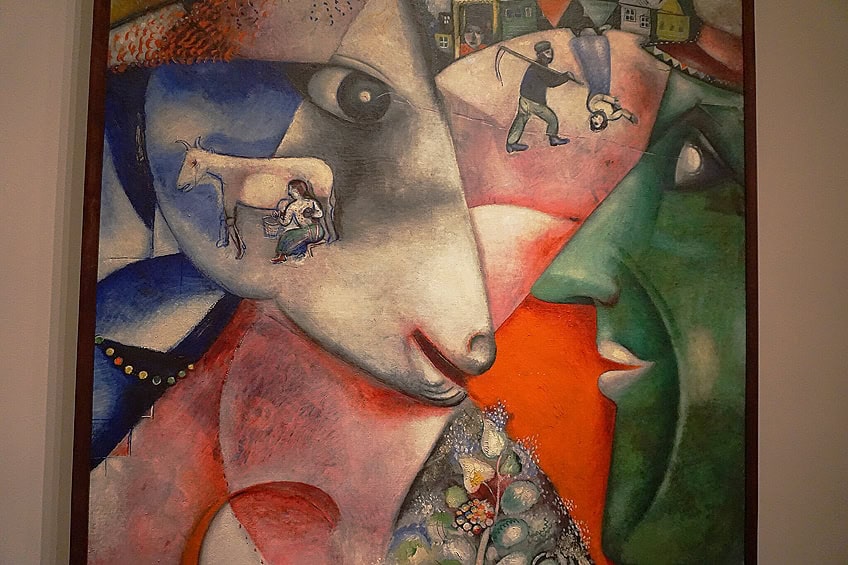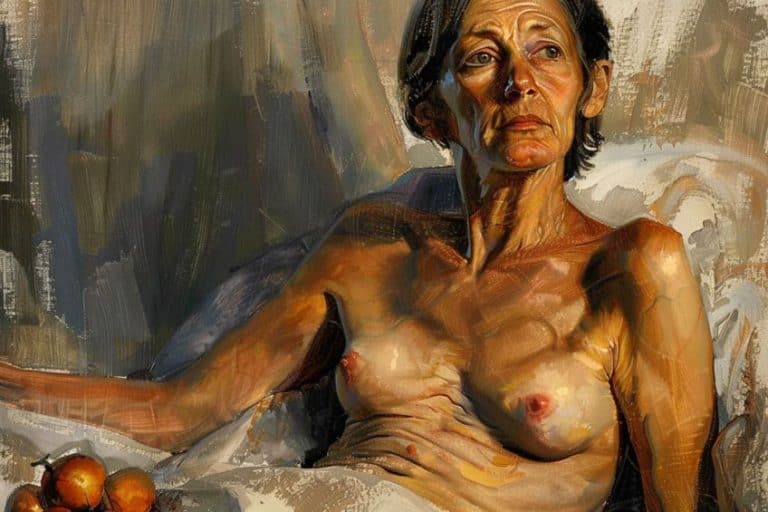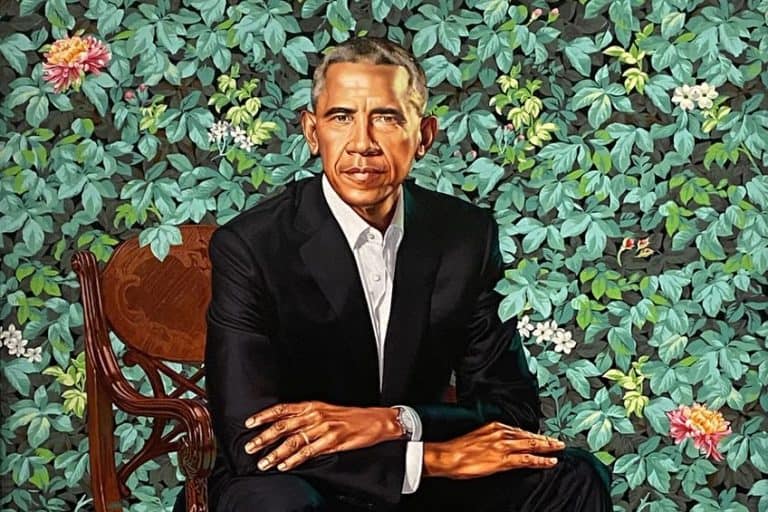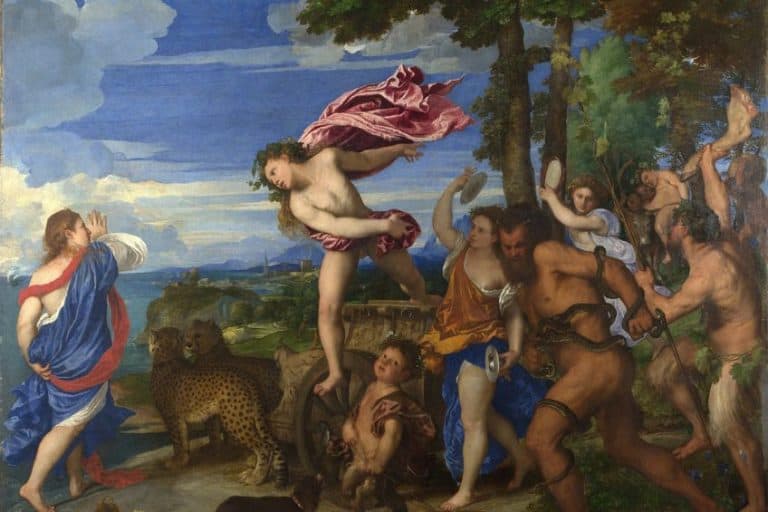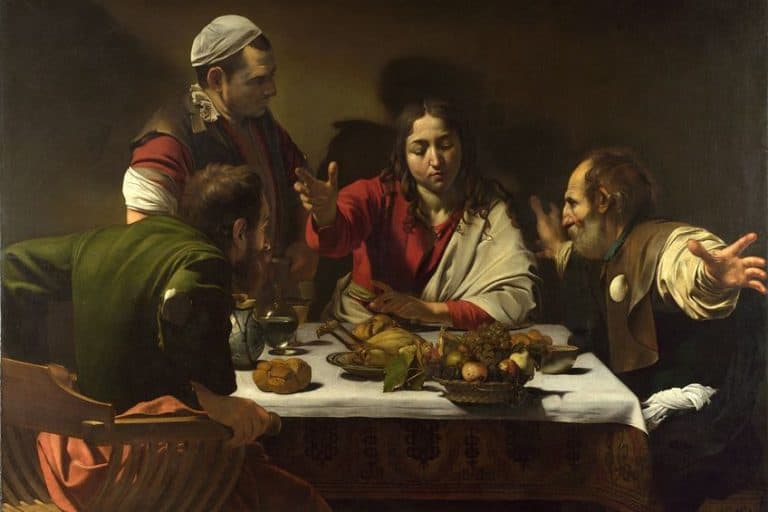“I and the Village” by Marc Chagall – A Whimsical Artwork
Marc Chagall’s I and the Village, painted in 1911, stands as a vivid, whimsical masterpiece that encapsulates the artist’s unique blend of Eastern European folklore and avant-garde modernism. This large, colorful canvas is a dreamlike portrayal of the interwoven relationship between man and nature, reflecting Chagall’s deep connection to his native village of Vitebsk in Belarus. With its vibrant, fantastical imagery, the painting features a series of overlapping, surreal scenes, including a green-faced man, a floating woman, and a serene cow, all connected by a continuous flow of bright, bold colors and dynamic shapes. I and the Village is celebrated for its rich symbolism, emotive storytelling, and innovative use of Cubist and Fauvist techniques, making it a quintessential example of Chagall’s imaginative vision and enduring influence in 20th-century art.
Key Takeaways
- I and the Village is a significant work by Marc Chagall that conveys personal memories through a distinct fusion of color and form.
- The painting exhibits a combination of cubist structure and folk imagery, encapsulating Chagall’s experiences in Vitebsk.
- Housed at the Museum of Modern Art in New York, this 1911 masterpiece is admired for its historical, cultural, and artistic resonance.
Cultural and Historical Context
| Artist | Marc Chagall (1887 – 1985) |
| Date Created | 1911 |
| Medium | Oil on canvas |
| Genre | Surrealism |
| Period/Movement | Modernism |
| Dimensions (cm) | 192.1 x 151.4 |
| Series/Versions | Single painting |
| Where Is It Housed? | Museum of Modern Art, New York City, United States |
| What It Is Worth | Priceless |
I and the Village is a painting by Marc Chagall, a Belarusian-French artist renowned for his distinct use of color and dream-like imagery. Created in 1911, during the pivotal period when Chagall was absorbing the influence of the avant-garde movements in Paris, the painting is a colorful mélange of memories from his childhood in Vitebsk, Belarus. It stands as an early example of his work which frequently merged personal narrative with folklore and tradition.

The painting presents a semi-abstract realm where familiar forms interweave with cubist-influenced fragmentation. Chagall’s use of symbols and depictions in I and the Village reflects an intricate relationship between the rural community and heritage that shaped his early life. The artwork is composed of various elements that are significant to Chagall’s memories and Jewish cultural history, and these motifs play a crucial role in the surreal atmosphere of his composition. This piece remains one of his most enduring works and is notable for both its emotive quality and its stylistic resonances with the broader movements of 20th-century art.
Influence of Belarusian Heritage
Marc Chagall was born in Vitebsk, which at the time was part of the Russian Empire and is now in Belarus. His upbringing in a small Eastern European town with a significant Jewish community deeply impacted his artwork. I and the Village illustrates facets of Jewish life and folklore through a dreamlike lens, expressing both the nostalgia for and the romanticization of his homeland.
This piece intertwines imagery derived from his childhood, Jewish symbols, and scenes representing the rural village life of Belarus.
Parisian Avant-Garde and La Ruche
Upon moving to Paris, Chagall became part of the dynamic and innovative art scene. He lived in La Ruche, a vibrant artist residence known for housing many creators, including numerous Eastern European and Jewish artists. The avant-garde movements flourishing in Paris, particularly Cubism, significantly influenced Chagall’s style as seen in I and the Village. While in Paris, he managed to merge the cutting-edge approaches of the Parisian art world with his personal experiences and memories of his native Vitebsk, producing a unique visual language that would eventually be showcased in New York’s Museum of Modern Art.

Artistic Style and Technique
In I and the Village, Marc Chagall’s unique approach weaves together elements of Cubism with vibrant color schemes, incorporating symbolic and surrealistic motifs throughout his composition.
Cubism and Color
- Cubism: Chagall’s technique in I and the Village shows influences of Cubism, primarily in the fragmented representation of the village and its inhabitants. He manipulates traditional perspectives to portray multiple viewpoints simultaneously.
- Form: Instead of representing objects from a single angle, Chagall breaks them down into geometric shapes, allowing multiple aspects of the scene to coexist on the canvas.
- Canvas: The oil on canvas medium serves as the perfect substrate for Chagall’s complex layering of images, which he deftly arranges to challenge the viewer’s perception of space and narrative.
- Color: Chagall’s use of color in I and the Village is bold and expressive, diverging from the often-muted palette of traditional Cubist works.
- Oil paint: The vivid oil paint colors enhance the dreamlike quality of the painting, using color to evoke emotion and tie together the various elements of the village scenes.
Symbolism and Surrealism
- Symbolism: Chagall’s artwork is rich with symbols, derived from personal memories and cultural references. The intertwining of human and animal figures signifies the close relationship between the villagers and their livestock, essential for their survival.
- Images: In I and the Village, symbols are not just visual elements but narrators of Chagall’s story, depicted in a way that merges real life with folklore.
- Surrealism: Elements of Surrealism in Chagall’s work are evident, as he creates an imaginative dreamscape that transcends the bounds of reality. Chagall conveys a seamless blend of the surreal with the everyday, inviting viewers to interpret the scenes through the lens of their own experiences and imaginings.

Analysis of I and the Village
I and the Village is a synthesis of Marc Chagall’s childhood memories and his artistic innovations. The painting reveals complex layers of personal and cultural meaning through its subject matter, use of light and color, distinctive lines and divisions, and the overarching meaning it conveys.
Subject Matter
The painting portrays various elements from the artist’s childhood in Vitebsk. The prominent figures are a green-faced man and a goat, which are interconnected by a line across their eyes, denoting a deep bond. Rural life is depicted with homes and churches, while smaller scenes include a milkmaid and a farmer.
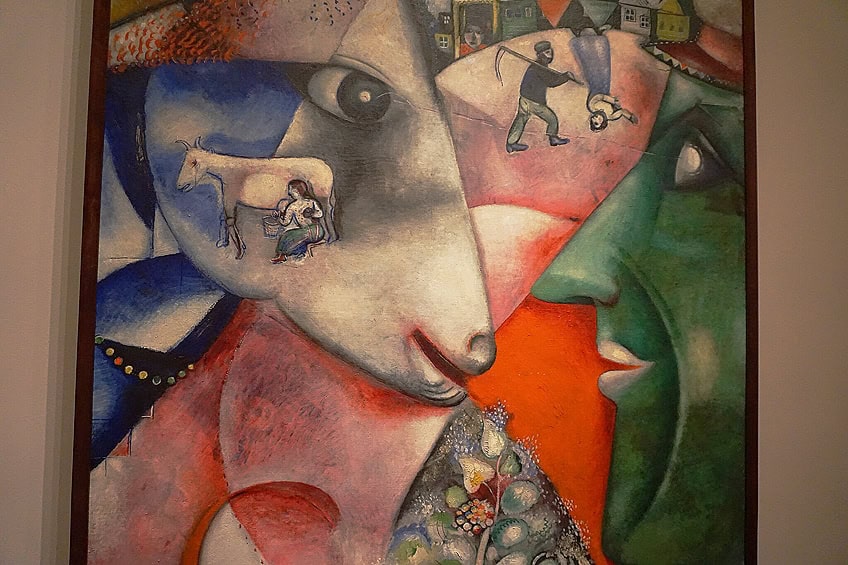
Light and Color
Chagall employs a vibrant palette with bold contrasts. The use of intense blues and greens next to warmer tones creates a dreamlike atmosphere. Light does not come from a naturalistic source; instead, it emphasizes emotional intensity and highlights key elements, such as the faces of the man and the animal.
Lines and Division
Lines in I and the Village are used to connect as well as to divide the composition. The lines create a sense of depth and perspective in the otherwise flat, cubist construction. They also serve to guide the viewer’s eye around the canvas.
This brings to attention the interconnectedness of the depicted subjects.
Meaning of Artwork
The artwork transcends mere reminiscence and becomes a narrative of coexistence and cultural identity. It represents the harmonious relationship between humans and animals in the artist’s native village, underscoring the importance of community and tradition. The painting is a reflection on memory, place, and the blending of past experiences with the present.
Key Themes and Motifs
Within I and the Village, Marc Chagall weaves together symbols of his childhood and Jewish heritage, creating a rich tapestry of themes and motifs. This narrative encapsulates a fantastical intersection of dreams, memory, village life, and spirituality.
Dreams and Memory
I and the Village is rich with elements drawn from Chagall’s dreams and memories. The dreamlike quality is embodied through a myriad of juxtaposed images such as houses and animals which seem to float without obeying the laws of physics. The green-faced man, a central figure in the composition, intersecting with the cow, represents memories tied to his rural upbringing. These recollections are not presented in a linear fashion but as fragments of Chagall’s subconscious mind, creating multiple narratives within the same space.
Village Life and Religion
Village life and religious symbolism are unmistakably pronounced in I and the Village. The painting reflects Chagall’s experiences in his hometown, depicted by the Orthodox Church and peasants, signifying the community’s spiritual and social center. The presence of domestic animals, especially the prominently featured cow and violinist, illustrates the symbiotic relationship between the villagers and their livestock, as well as the cultural importance of music.
The integration of Yiddish elements, such as the village scenes, symbolizes Chagall’s Jewish identity, while the hand holding a sprig above the village suggests a protective blessing over the community.
Legacy and Exhibitions
I and the Village is a seminal work by Marc Chagall that is prominently housed in the Museum of Modern Art (MoMA) in New York City, and its presence there underscores the painting’s significant legacy. The acquisition of this masterpiece by MoMA was facilitated through funds provided by Mrs. Simon Guggenheim Fund.

The painting’s exhibition history is a testament to its enduring appeal and historical importance. I and the Village has been part of various exhibitions, reflecting Chagall’s unique style and the cultural impact of his work. MoMA plays a pivotal role in maintaining the painting’s visibility to the public, ensuring that it continues to inspire audiences from around the United States and the globe.
I and the Village remains one of Marc Chagall’s most iconic works, epitomizing his distinctive style that merges the fantastical with the deeply personal. This painting not only highlights Chagall’s innovative use of color and form but also serves as a poignant tribute to his cultural roots and childhood memories. Its dreamlike composition and rich symbolism continue to captivate viewers, inviting them into a world where reality and imagination seamlessly blend. As a testament to Chagall’s genius, I and the Village stands as a pivotal piece in the narrative of modern art, embodying the artist’s unique ability to convey universal themes of identity, community, and the human experience through a lens of enchanting surrealism.
Frequently Asked Questions
What Artistic Techniques Did Marc Chagall Employ in I and the Village?
Chagall utilized vibrant color contrasts and dreamlike imagery in I and the Village, characteristics of his signature style. The painting also featured elements of Cubism, as seen in the fragmented forms and the multiple perspectives that depict his memories.
How Does I and the Village Reflect Marc Chagall’s Heritage?
I and the Village serves as a visual homage to Chagall’s Belarusian Jewish heritage. The painting is suffused with imagery from his hometown of Vitebsk, and the pastoral scenes reflect the rural life of the shtetl, or Jewish village, in Eastern Europe.
What Is the Symbolism Behind the Images Depicted in I and the Village?
The painting is rich with symbolism. It features a green-faced man, a goat, and a series of houses that allude to Chagall’s childhood memories. The goat often symbolizes hope and fertility, while the inverted violin player reflects the inversion of reality, a common trope in Chagall’s work.
In What Ways Does I and the Village Challenge Traditional Perspectives in Art?
Chagall’s work challenges traditional art by blending fantasy with reality and juxtaposing rural folk culture with modern painting styles. I and the Village defies linear narrative structures and conventional representations of space, embracing a more personal and emotive approach to storytelling in art.
Isabella studied at the University of Cape Town in South Africa and graduated with a Bachelor of Arts majoring in English Literature & Language and Psychology. Throughout her undergraduate years, she took Art History as an additional subject and absolutely loved it. Building on from her art history knowledge that began in high school, art has always been a particular area of fascination for her. From learning about artworks previously unknown to her, or sharpening her existing understanding of specific works, the ability to continue learning within this interesting sphere excites her greatly.
Her focal points of interest in art history encompass profiling specific artists and art movements, as it is these areas where she is able to really dig deep into the rich narrative of the art world. Additionally, she particularly enjoys exploring the different artistic styles of the 20th century, as well as the important impact that female artists have had on the development of art history.
Learn more about Isabella Meyer and the Art in Context Team.
Cite this Article
Isabella, Meyer, ““I and the Village” by Marc Chagall – A Whimsical Artwork.” Art in Context. May 23, 2024. URL: https://artincontext.org/i-and-the-village-by-marc-chagall/
Meyer, I. (2024, 23 May). “I and the Village” by Marc Chagall – A Whimsical Artwork. Art in Context. https://artincontext.org/i-and-the-village-by-marc-chagall/
Meyer, Isabella. ““I and the Village” by Marc Chagall – A Whimsical Artwork.” Art in Context, May 23, 2024. https://artincontext.org/i-and-the-village-by-marc-chagall/.


